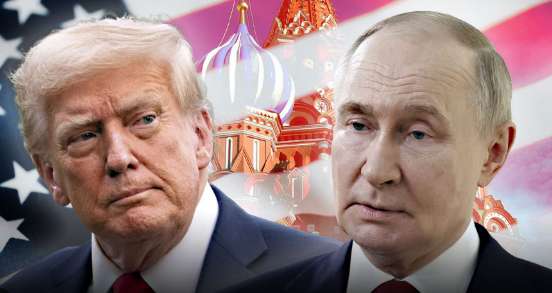This Is What's Really At Stake For Trump-Putin Showdown Tomorrow
US President Trump and Russian President Putin will meet on the 15th (Friday) in Anchorage, Alaska, USA. On Wednesday, Trump threatened that Russia would face "severe consequences" if Putin did not ag

US President Trump and Russian President Putin will meet on the 15th (Friday) in Anchorage, Alaska, USA. On Wednesday, Trump threatened that Russia would face "severe consequences" if Putin did not agree to the Ukraine peace process.
Russia is the world's third-largest oil producer. Three and a half years ago, when the Russia-Ukraine conflict broke out, oil prices surged sharply as markets feared disruptions to crude supplies.
How will tomorrow's "Putin-Trump meeting" affect oil price trends? Analysts have outlined two possible scenarios.
If A "Constructive Agreement" Is Reached
Daniela Sabin Hathorn, a senior market analyst at the global online trading platform Capital.com, stated in a report that if the U.S. and Russia announce a "constructive agreement" to lift some sanctions on Russian oil exports, the market might price in increased global supply, leading to a drop in oil prices.
However, Kevin Book, research director and managing director at U.S. energy research and consulting firm ClearView Energy Partners, said it would be "very difficult" to reach a peace agreement that would allow Russian energy products to re-enter the market.
"There are many hurdles in the way - not least the 18th sanctions package and its predecessors from the European Union," Book said. He added that Europe can fundamentally reshape the market- "that's their ticket to the negotiating table."
If The Meeting Goes Poorly
Another possibility is that the meeting between Trump and Putin goes poorly, leading to further escalation of U.S. and European sanctions against Russia.
Trump stated on Wednesday that if the meeting with Putin is successful, a second meeting will be held soon, with Ukrainian President Zelensky in attendance. At the same time, he warned that if the conflict does not stop, Russia will face consequences.
On the same day, U.S. Treasury Secretary Bessent also warned in a media interview that if the meeting between Trump and Putin does not go well, the U.S. might impose additional sanctions or secondary tariffs.
ClearView's Book added that Trump has hinted he is open to broadly applying new restrictions on Russia, so "if talks break down, further measures could be introduced."
He believes that in the event of failed negotiations, the U.S. might introduce new measures to target Russia's "shadow fleet"-the tankers used to circumvent Western sanctions.
Trump said on Wednesday that the purpose of his meeting with Putin in Alaska is to "lay the groundwork" for rapid follow-up talks, including with Zelensky. Meanwhile, the Trump administration has twice this week downplayed expectations of a swift ceasefire agreement between Russia and Ukraine.
The book noted that the Trump administration has been signaling that Friday's summit is the "first step," although it may be trying to "underpromise and overdeliver." He also emphasized that, for now, geopolitical news seems unlikely to trigger significant volatility in oil benchmarks like Brent crude.
"It's a pretty skeptical market right now," he said. "Traders have needed a lot to get excited about geopolitical risk in the last few years. The $13 of travel in the Brent print during the Iran war to the upside were short-lived, right? At the first sign of a cease-fire, all of the risk fell out of the market like it was made out of gravity."
Book advised traders to keep this in mind when preparing for Friday's meeting. Without a clear outcome, "we stay where we are - a well-supplied market to which OPEC+ has added considerably. Absent something that can move supply, you're going to have to convince traders of an awful lot of political momentum before you get a big move."
Goldman Sachs' commodities research team believes that Friday's "Putin-Trump meeting" will not lead to significant changes in Russian oil supply.
The bank argues that in the case of an agreement, while a lasting peace deal could result in the U.S. easing sanctions on Russian oil, it would not lead to a short-term surge in Russian oil supply. This is because Russia's current production is primarily constrained by OPEC+ quota decisions, insufficient oil investment, and a strong ruble.
In the event of escalating U.S.-Russia tensions, although the lack of progress in ceasefire talks could trigger new threats of secondary oil tariffs/sanctions, the risk of large-scale disruptions to Russian supply remains limited. This is mainly due to three factors: the sheer volume of Russian exports, the potential to maintain demand through deeper price discounts, and the strong willingness of key buyers (such as India) to continue energy cooperation with Russia.
Disclaimer: The views in this article are from the original Creator and do not represent the views or position of Hawk Insight. The content of the article is for reference, communication and learning only, and does not constitute investment advice. If it involves copyright issues, please contact us for deletion.